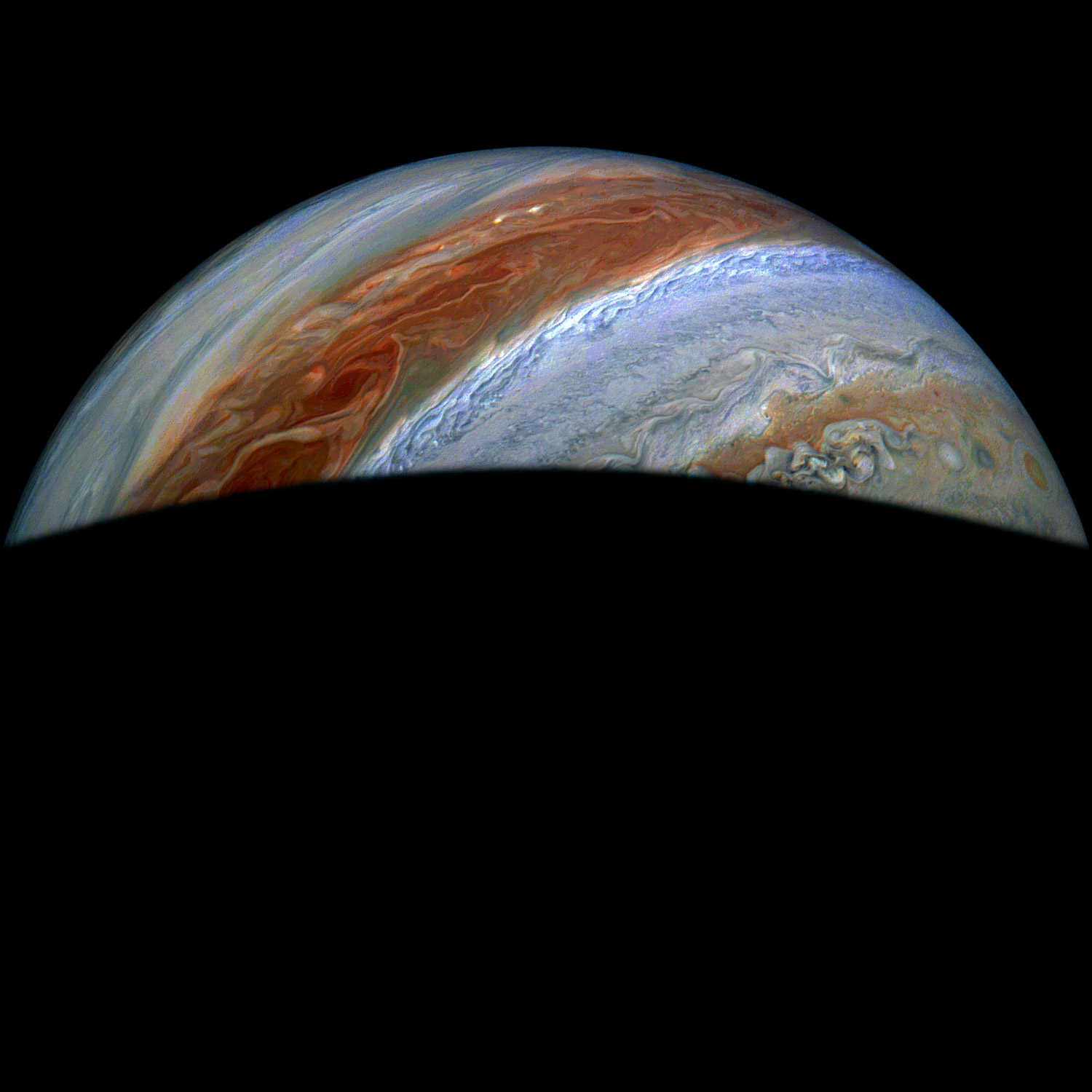JunoCam, the visible light imager aboard NASA’s Juno spacecraft, captured this view of Jupiter’s northern high latitudes back in January. The enhanced colour rendition shows the gas giant’s distinctive bands of cloud, known as ‘zones’ and ‘belts’.
The zones are the brighter bands. These are regions of rising air, where Jupiter’s atmospheric gases cool and form high, thick clouds. These are made not of water like Earth’s clouds but of ammonia ice. The belts are the dark-coloured bands. Here, the air is sinking, and so the gases are warmer, which suppresses cloud formation. The thinner clouds in the belts let the JunoCam see deeper, darker layers of the atmosphere, down where the clouds are composed of ammonium hydrosulfide. The beauty and chaos of Jupiter’s clouds occur at the boundaries between these zones and belts.
That is where the gas giant’s powerful jet streams are. These are driven by the planet’s rapid spin – it has a day of just 10 hours – and its internal warmth rather than the solar heating that drives the jet streams of Earth. The immense shearing of wind between Jupiter’s zones and belts, which move at different speeds and sometimes directions, causes the swirls of cloud and enormous storms so distinctive of the mighty gas giant.
Ammonia clouds in Jupiter’s upper atmosphere, captured by using NASA/JPL-Caltech/SwRI/MSSS and processed by Jackie Branc.



